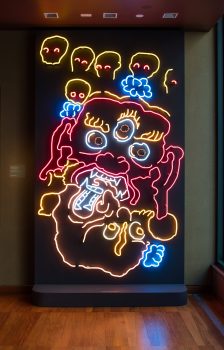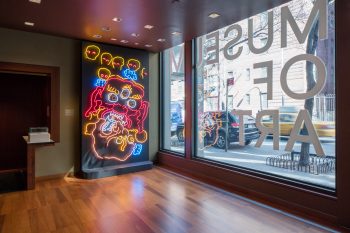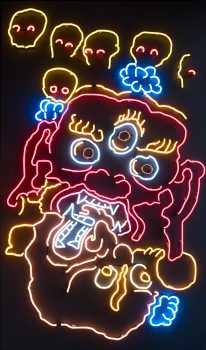Shezad Dawood
2018



Shezad Dawood
2018



Buzzing with energy, Shezad Dawood’s abstracted fierce figure is a contemporary twist on depictions of Buddhist deities who help practitioners transcend obstacles. Dawood blends cultural heritage with references to popular visual culture and materials—like the neon of this sculpture—to reexamine how we tell and perceive history. The Buddhist gods seen here, known as wrathful deities, are a positive force despite their demonic appearance. The six small skulls and enveloping flames above the central figure’s elongated face represent the embodiment of wrathfulness and the power to transform ferocious activity into positive energy. Skull crowns often adorn the heads of wrathful deities, with many examples in the Museum’s collection, including Dorje Drolo (C2001.10.1).
A kind of energy that can be used, individually and collectively, to effect change.
A meditation technique primarily used in tantric practice that involves imagining a deity in one’s mind or imagining oneself becoming a deity and carrying out various activities. Such techniques are intended to help a practitioner transform ordinary perception and achieve enlightened qualities.
A distorted mental state that can amplify negative attitudes and lead to impulsive, harmful actions. In Buddhism it is considered one of the three poisons, along with ignorance and desire, that are the main sources of suffering and perpetuate the cycle of death and rebirth known as samsara.
Protectors of Buddhist teachings who destroy obstacles that impede the path to enlightenment. The more frightening and gruesome their appearance, the greater their power.
Get the latest news and stories from the Rubin, plus occasional information on how to support our work.